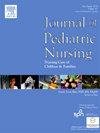求助PDF
{"title":"提高服药依从性:以家庭为中心,为接受造血干细胞移植的儿童共同设计的移动医疗应用程序。","authors":"Micah A. Skeens PhD , Mariam Kochashvili B.A , Ashley Benhayoun B.A , Jessica Ralph B.A , Rajinder Bajwa MD , Kathryn Vannatta PhD , Cynthia A. Gerhardt PhD , Emre Sezgin PhD","doi":"10.1016/j.pedn.2024.10.009","DOIUrl":null,"url":null,"abstract":"<div><h3>Background</h3><div>High rates of medication non-adherence (52–73 %) in pediatric hematopoietic stem cell transplant (HCT), due to complex regimens and forgetfulness, increase life-threatening risks.</div></div><div><h3>Purpose</h3><div>This mixed methods study aimed to develop and evaluate the usability of the BMT4me© mobile health application to enhance adherence to immunosuppressants in children undergoing HCT.</div></div><div><h3>Design and methods</h3><div>A mixed methods, cross-sectional, iterative approach, with caregiver-child dyads and healthcare providers, was used to create the BMT4me© app prototype. This iterative approach involved continuously refining the app based on feedback from stakeholders at each phase. The process was user-centered, engaging patients, caregivers and healthcare providers in each stage. In phase 1, caregiver/child dyads (ages 8–17, <em>n</em> = 14) provided feedback on wireframes via qualitative interviews, which informed prototype development. Phase 2 involved focus groups with healthcare providers including physicians (<em>n</em> = 3), nurses (<em>n</em> = 15), and advanced practice nurses (n = 3) who evaluated the prototype's usability and provided feedback via reaction cards and the System Usability Scale (SUS). The System Usability Scale (SUS) measured usability, and thematic analysis identified key themes regarding engagement, ease of use, safety, and helpfulness. Quantitative data were analyzed using descriptive statistics, while qualitative data were thematically analyzed with NVivo software.</div></div><div><h3>Results</h3><div>The mean SUS score from healthcare providers was 84.2, notably higher than the average expected score of 68, indicating successful usability of the BMT4me app. Thematic analysis highlighted themes of engagement, ease of use, and safety among providers, and ease of use and helpfulness among children and caregivers. This feedback refined the app to better serve families, patients, and providers.</div></div><div><h3>Practice implications</h3><div>The BMT4me© app shows promise in improving medication adherence in pediatric HCT patients. Integrating such mHealth applications into clinical practice will support adherence and improve outcomes in patients with high-risk, complex regimens. This app will guide practical implications and effectiveness of digital health tools.</div></div><div><h3>Conclusions</h3><div>A user-centered design approach, involving multiple stakeholders, was essential in developing BMT4me app. Feedback facilitated enhancements in app features and functionality. Pilot feasibility testing with caregivers is ongoing. Future research will assess the efficacy of digital interventions on clinical outcomes in children with complex treatment regimens.</div></div>","PeriodicalId":48899,"journal":{"name":"Journal of Pediatric Nursing-Nursing Care of Children & Families","volume":"79 ","pages":"Pages e132-e140"},"PeriodicalIF":2.1000,"publicationDate":"2024-11-01","publicationTypes":"Journal Article","fieldsOfStudy":null,"isOpenAccess":false,"openAccessPdf":"","citationCount":"0","resultStr":"{\"title\":\"Enhancing medication adherence: A family-centered co-designed mHealth app for children undergoing hematopoietic stem cell transplant\",\"authors\":\"Micah A. Skeens PhD , Mariam Kochashvili B.A , Ashley Benhayoun B.A , Jessica Ralph B.A , Rajinder Bajwa MD , Kathryn Vannatta PhD , Cynthia A. Gerhardt PhD , Emre Sezgin PhD\",\"doi\":\"10.1016/j.pedn.2024.10.009\",\"DOIUrl\":null,\"url\":null,\"abstract\":\"<div><h3>Background</h3><div>High rates of medication non-adherence (52–73 %) in pediatric hematopoietic stem cell transplant (HCT), due to complex regimens and forgetfulness, increase life-threatening risks.</div></div><div><h3>Purpose</h3><div>This mixed methods study aimed to develop and evaluate the usability of the BMT4me© mobile health application to enhance adherence to immunosuppressants in children undergoing HCT.</div></div><div><h3>Design and methods</h3><div>A mixed methods, cross-sectional, iterative approach, with caregiver-child dyads and healthcare providers, was used to create the BMT4me© app prototype. This iterative approach involved continuously refining the app based on feedback from stakeholders at each phase. The process was user-centered, engaging patients, caregivers and healthcare providers in each stage. In phase 1, caregiver/child dyads (ages 8–17, <em>n</em> = 14) provided feedback on wireframes via qualitative interviews, which informed prototype development. Phase 2 involved focus groups with healthcare providers including physicians (<em>n</em> = 3), nurses (<em>n</em> = 15), and advanced practice nurses (n = 3) who evaluated the prototype's usability and provided feedback via reaction cards and the System Usability Scale (SUS). The System Usability Scale (SUS) measured usability, and thematic analysis identified key themes regarding engagement, ease of use, safety, and helpfulness. Quantitative data were analyzed using descriptive statistics, while qualitative data were thematically analyzed with NVivo software.</div></div><div><h3>Results</h3><div>The mean SUS score from healthcare providers was 84.2, notably higher than the average expected score of 68, indicating successful usability of the BMT4me app. Thematic analysis highlighted themes of engagement, ease of use, and safety among providers, and ease of use and helpfulness among children and caregivers. This feedback refined the app to better serve families, patients, and providers.</div></div><div><h3>Practice implications</h3><div>The BMT4me© app shows promise in improving medication adherence in pediatric HCT patients. Integrating such mHealth applications into clinical practice will support adherence and improve outcomes in patients with high-risk, complex regimens. This app will guide practical implications and effectiveness of digital health tools.</div></div><div><h3>Conclusions</h3><div>A user-centered design approach, involving multiple stakeholders, was essential in developing BMT4me app. Feedback facilitated enhancements in app features and functionality. Pilot feasibility testing with caregivers is ongoing. Future research will assess the efficacy of digital interventions on clinical outcomes in children with complex treatment regimens.</div></div>\",\"PeriodicalId\":48899,\"journal\":{\"name\":\"Journal of Pediatric Nursing-Nursing Care of Children & Families\",\"volume\":\"79 \",\"pages\":\"Pages e132-e140\"},\"PeriodicalIF\":2.1000,\"publicationDate\":\"2024-11-01\",\"publicationTypes\":\"Journal Article\",\"fieldsOfStudy\":null,\"isOpenAccess\":false,\"openAccessPdf\":\"\",\"citationCount\":\"0\",\"resultStr\":null,\"platform\":\"Semanticscholar\",\"paperid\":null,\"PeriodicalName\":\"Journal of Pediatric Nursing-Nursing Care of Children & Families\",\"FirstCategoryId\":\"3\",\"ListUrlMain\":\"https://www.sciencedirect.com/science/article/pii/S0882596324003701\",\"RegionNum\":4,\"RegionCategory\":\"医学\",\"ArticlePicture\":[],\"TitleCN\":null,\"AbstractTextCN\":null,\"PMCID\":null,\"EPubDate\":\"\",\"PubModel\":\"\",\"JCR\":\"Q2\",\"JCRName\":\"NURSING\",\"Score\":null,\"Total\":0}","platform":"Semanticscholar","paperid":null,"PeriodicalName":"Journal of Pediatric Nursing-Nursing Care of Children & Families","FirstCategoryId":"3","ListUrlMain":"https://www.sciencedirect.com/science/article/pii/S0882596324003701","RegionNum":4,"RegionCategory":"医学","ArticlePicture":[],"TitleCN":null,"AbstractTextCN":null,"PMCID":null,"EPubDate":"","PubModel":"","JCR":"Q2","JCRName":"NURSING","Score":null,"Total":0}
引用次数: 0
引用
批量引用


